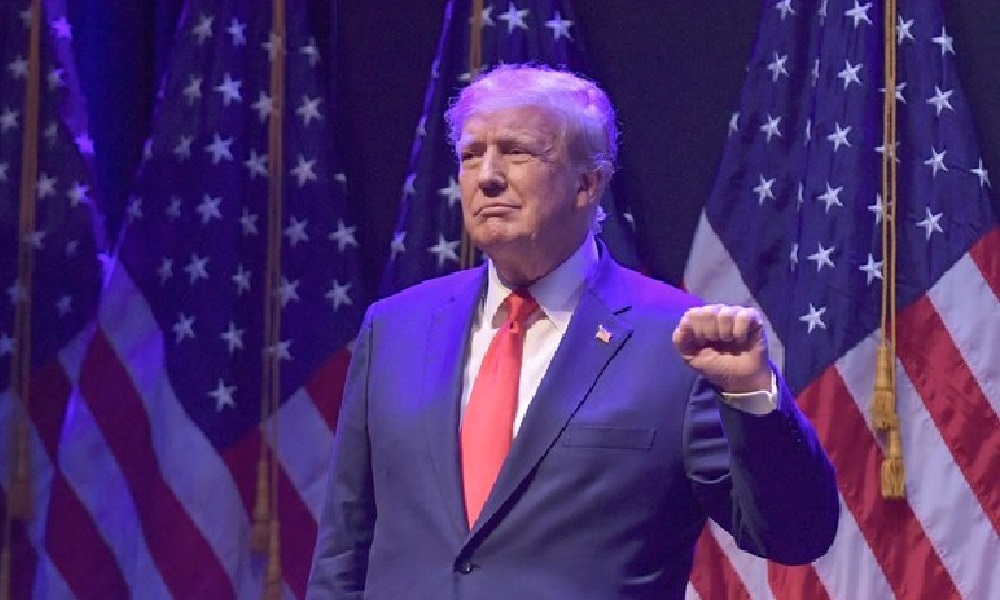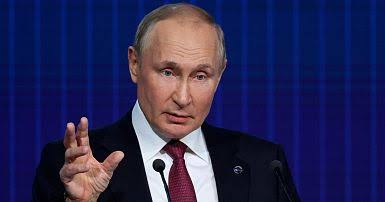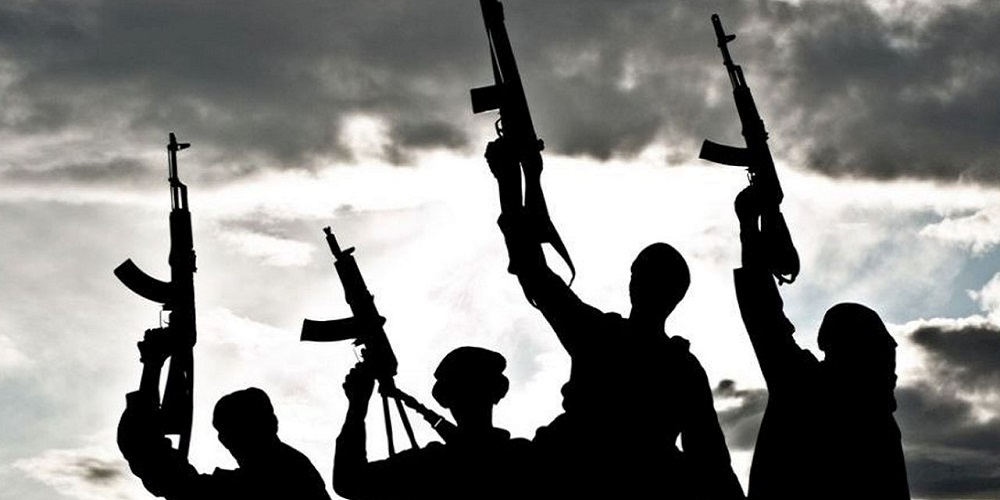Foreign
JUST IN: US Supreme Court restores Trump to ballot

…reject state attempts to ban him over Capitol attack
The Supreme Court on Monday unanimously restored Donald Trump to 2024 presidential primary ballots, rejecting state attempts to ban the Republican former president over the Capitol riot.
The justices ruled a day before the Super Tuesday primaries that states cannot invoke a post-Civil War constitutional provision to keep presidential candidates from appearing on ballots. That power resides with Congress, the court wrote in an unsigned opinion.
Trump posted on his social media network shortly after the decision was released: “BIG WIN FOR AMERICA!!!”
The outcome ends efforts in Colorado, Illinois, Maine and elsewhere to kick Trump, the front-runner for his party’s nomination, off the ballot because of his attempts to undo his loss in the 2020 election to Democrat Joe Biden, culminating in the Jan. 6, 2021, attack on the Capitol.
Colorado Secretary of State Jena Griswold expressed disappointment in the court’s decision as she acknowledged that “Donald Trump is an eligible candidate on Colorado’s 2024 Presidential Primary.”
Trump’s case was the first at the Supreme Court dealing with a provision of the 14th Amendment that was adopted after the Civil War to prevent former officeholders who “engaged in insurrection” from holding office again.
Colorado’s Supreme Court, in a first-of-its-kind ruling, had decided that the provision, Section 3, could be applied to Trump, who that court found incited the Capitol attack. No court before had applied Section 3 to a presidential candidate.
Donald Trump is facing four criminal indictments, and a civil lawsuit.
The justices sidestepped the politically fraught issue of insurrection in their opinions Monday.
The court held that states may bar candidates from state office. “But States have no power under the Constitution to enforce Section 3 with respect to federal offices, especially the Presidency,” the court wrote.
While all nine justices agreed that Trump should be on the ballot, there was sharp disagreement from the three liberal members of the court and a milder disagreement from conservative Justice Amy Coney Barrett that their colleagues went too far in determining what Congress must do to disqualify someone from federal office.
Justices Sonia Sotomayor, Elena Kagan and Ketanji Brown Jackson said they agreed that allowing the Colorado decision to stand could create a “chaotic state by state patchwork” but said they disagreed with the majority’s finding a disqualification for insurrection can only happen when Congress enacts legislation. “Today, the majority goes beyond the necessities of this case to limit how Section 3 can bar an oathbreaking insurrectionist from becoming President,” the three justices wrote in a joint opinion.
It’s unclear whether the ruling leaves open the possibility that Congress could refuse to certify the election of Trump or any other presidential candidate it sees as having violated Section 3.
Derek Muller, a law professor at Notre Dame University, said “it seems no,” noting that the liberals complained that the majority ruling forecloses any other ways for Congress to enforce the provision. Rick Hasen, a law professor at the University of California-Los Angeles, wrote that it’s frustratingly unclear what the bounds might be on Congress.
Hasen was among those urging the court to settle the issue so there wasn’t the risk of Congress rejecting Trump under Section 3 when it counts electoral votes on Jan. 6, 2025.
“We may well have a nasty, nasty post-election period in which Congress tries to disqualify Trump but the Supreme Court says Congress exceeded its powers,” he wrote.
Both sides had requested fast work by the court, which heard arguments less than a month ago, on Feb. 8. The justices seemed poised then to rule in Trump’s favor.
Trump had been kicked off the ballots in Colorado, Maine and Illinois, but all three rulings were on hold awaiting the Supreme Court’s decision.
The case is the court’s most direct involvement in a presidential election since Bush v. Gore, a decision delivered a quarter-century ago that effectively handed the 2000 election to Republican George W. Bush. And it’s just one of several cases involving Trump directly or that could affect his chances of becoming president again, including a case scheduled for arguments in late April about whether he can be criminally prosecuted on election interference charges, including his role in the Jan. 6 Capitol attack. The timing of the high court’s intervention has raised questions about whether Trump will be tried before the November election.
The arguments in February were the first time the high court had heard a case involving Section 3. The two-sentence provision, intended to keep some Confederates from holding office again, says that those who violate oaths to support the Constitution are barred from various positions including congressional offices or serving as presidential electors. But it does not specifically mention the presidency.
Conservative and liberal justices questioned the case against Trump. Their main concern was whether Congress must act before states can invoke the 14th Amendment. There also were questions about whether the president is covered by the provision.
The lawyers for Republican and independent voters who sued to remove Trump’s name from the Colorado ballot had argued that there is ample evidence that the events of Jan. 6 constituted an insurrection and that it was incited by Trump, who had exhorted a crowd of his supporters at a rally outside the White House to “fight like hell.” They said it would be absurd to apply Section 3 to everything but the presidency or that Trump is somehow exempt. And the provision needs no enabling legislation, they argued.
Trump’s lawyers mounted several arguments for why the amendment can’t be used to keep him off the ballot. They contended the Jan. 6 riot wasn’t an insurrection and, even if it was, Trump did not go to the Capitol or join the rioters. The wording of the amendment also excludes the presidency and candidates running for president, they said. Even if all those arguments failed, they said, Congress must pass legislation to reinvigorate Section 3.
The case was decided by a court that includes three justices appointed by Trump when he was president. They have considered many Trump-related cases in recent years, declining to embrace his bogus claims of fraud in the 2020 election and refusing to shield tax records from Congress and prosecutors in New York.
The 5-4 decision in Bush v. Gore case more than 23 years ago was the last time the court was so deeply involved in presidential politics. Justice Clarence Thomas is the only member of the court who was on the bench then.
Thomas has ignored calls by some Democratic lawmakers to step aside from the Trump case because his wife, Ginni, supported Trump’s effort to overturn the 2020 election results and attended the rally that preceded the storming of the Capitol by Trump supporters.
Foreign
Burkina Faso, Mali, Niger seek access to Atlantic through Morocco

Foreign ministers of military-ruled Sahel states of Burkina Faso, Mali and Niger said on Monday they endorse an initiative offering them access to global trade through Morocco’s Atlantic ports, Reuters reported.
The foreign ministers expressed their countries’ position during a meeting with Morocco’s King Mohammed VI in Rabat, it said.
The West African nations, run by military leaders who took power in coups in recent years, withdrew from the regional grouping ECOWAS last year and formed an alliance known as the Confederation of Sahel States (AES).
Morocco, a major investor in West Africa’s financial and agricultural sectors, announced its trade access initiative in November 2023, after ECOWAS imposed trade restrictions on the three states.
The initiative is conducive to “diversifying our access to the sea,” Mali’s foreign minister Abdoulaye Diop told state media.
The meeting “is part of the strong and longstanding relations of the Kingdom with the three brotherly countries of the Alliance of Sahel States,” Morocco’s news agency said.
The visit takes place as relations between the AES and Algeria, Morocco’s regional rival, deteriorate.
Algeria has cut ties with Morocco and backs the Polisario Front which seeks an independent state in Western Sahara, a territory Morocco considers its own and where it is building a port worth $1 billion.
The new AES grouping expelled French and other Western forces and turned towards Russia for military support.
In December, Morocco mediated the release of four French spies held in Burkina Faso, five months after Paris recognised Rabat’s sovereignty over Western Sahara.
Foreign
Massive power outage hits Spain, Portugal

A massive power outage paralyzed Spain and Portugal on Monday in an incident with no immediate explanation.
“It’s best to not speculate. We will know the causes soon. We are not discarding any hypothesis, but right now, we just focus on what’s most important: returning electricity to our homes,” Spanish Prime Minister Pedro Sánchez said at a news conference Monday.
The stoppage, which occurred about 12:30 p.m. Madrid time, caused chaos across the Iberian Peninsula and showed the vulnerability of Europe’s electrical grid — even on days without extreme weather or spiking demand.
Trains stopped running. Hospitals canceled surgeries, according to news agencies, and depended on backup generators. Business ground to a halt as machines were unable to process credit card transactions. The outage even suspended several Madrid Open tennis matches, with photos showing a court with nonfunctioning scoreboards and darkened stands. Sánchez urged citizens to restrict cellphone use and to call emergency dispatchers only “when it is really necessary.”
By about 5:30 p.m. Madrid time, Red Eléctrica, the corporation that operates Spain’s electricity grid, said some power had been restored across corners of the peninsula, including parts of Catalonia, the Basque Country and Andalusia. About two hours later, the utility provider said more than a fifth of the peninsula’s power had been recovered. Full recovery may take up to 10 hours, Red Eléctrica told Spanish news outlets, which means the country’s power could be restored some time late Monday.
“Causes are being analyzed, and all resources are being dedicated to addressing the issue,” Red Eléctrica said in a statement.
More than 50 million people live on the Iberian Peninsula, but authorities did not provide an immediate estimate for the number of people affected by the outage. Portugal’s national grid operator described it as a “massive cut” in electricity supply across the peninsula. Data from Red Eléctrica showed a sudden plunge in electricity demand from about 27,000 megawatts to less than 13,000. Levels remained abnormally low two hours later.
Spain’s Energy Ministry said in a statement that Sara Aagesen, a deputy prime minister, visited the Red Eléctrica control center to “learn about the situation firsthand and monitor the incident.”
“All necessary measures will be put in place to restore normality as quickly as possible,” the statement said.
Prime Minister Sánchez also held a meeting at the control center, with Aagesen and several other ministers present, the Spanish newspaper El País reported, and Spain’s National Security Council called a meeting to address the outage.
Portugal’s Lusa News Agency said the country’s cybersecurity center had seen no evidence so far that the blackout stemmed from a cyberattack. Separately, the Reuters news agency quoted unnamed officials as saying a cyberattack had not been ruled out.
The Spanish grid also connects with Morocco, France, Andorra and Portugal. Spain and France experienced a major blackout on July 24, 2021, but it lasted less than an hour.
Previous power outages in Europe have been caused by technical problems, lightning strikes and damaged cables. In 2003, Italy faced a huge blackout because a tree was too close to a power line, resulting in a flashover, or a jump of electricity from the line to vegetation.
Foreign
Putin announces three-day Russian ceasefire in Ukraine from 8 May

Russian President Vladimir Putin has announced a temporary ceasefire for the war in Ukraine.
The Kremlin said the ceasefire would run from the morning of 8 May until 11 May – which coincides with victory celebrations to mark the end of World War Two.
In response, Ukraine’s Foreign Minister Andrii Sybiha called for an immediate ceasefire lasting “at least 30 days”.
While US President Donald Trump, who has been attempting to broker a truce between the two sides, said he wants to see a permanent ceasefire, the White House said.
The Kremlin announced a similar, 30-hour truce over Easter, but while both sides reported a dip in fighting, they accused each other of hundreds of violations.
Ceasefires have been attempted more than 20 times in Ukraine – all of them failed eventually, and some within minutes of going into effect.
The most recent one, over Easter, was very limited in scope and only resulted in a slight reduction in fighting, with both sides accusing each other of violating the truce.
In a statement on Monday, the Kremlin said Putin declared the ceasefire “based on humanitarian considerations”.
A translation of the statement said: “Russia believes that the Ukrainian side should follow this example.
“In the event of violations of the ceasefire by the Ukrainian side, the Armed Forces of the Russian Federation will give an adequate and effective response.
“The Russian side once again declares its readiness for peace talks without preconditions, aimed at eliminating the root causes of the Ukrainian crisis, and constructive interaction with international partners.”
Following its release, Ukrainian Foreign Minister Sybiha said: “If Russia truly wants peace, it must cease fire immediately.”
“Why wait until May 8th?” he wrote on X. “If the fire can be ceased now and since any date for 30 days—so it is real, not just for a parade.”
He said Ukraine is ready to support a “lasting, durable, and full ceasefire. And this is what we are constantly proposing, for at least 30 days”.
White House press secretary Karoline Leavitt said Trump was growing “frustrated with leaders of both countries”.
“He wants to see a permanent ceasefire.
“I understand Vladimir Putin this morning offered a temporary ceasefire. The president has made it clear he wants to see a permanent ceasefire first to stop the killing, stop the bloodshed.”
The latest announcement comes during what the US has described as a “very critical” week for Russia-Ukraine peace talks.
Washington has been trying to broker a deal between the two sides, but the Donald Trump administration has threatened to pull out if they do not see progress.
Putin is keen to create the impression that Russia is serious about seeking peace – and he is keen for Trump to hear that message given Ukraine has accepted Washington’s proposal for a more lasting 30-day ceasefire.
It comes after the US president expressed annoyance with Russia’s continued attacks on Ukraine.
Russia launched a full-scale invasion of Ukraine on 24 February 2022, and currently controls about 20% Ukraine’s territory, including the southern Crimea peninsula annexed by Moscow in 2014.
It is estimated that hundreds of thousands of people – the vast majority of them soldiers – have been killed or injured on all sides since 2022.
-

 News20 hours ago
News20 hours agoJust in: Popular Nigerian billionaire, E-Money nabbed by EFCC
-

 News21 hours ago
News21 hours agoKing Sunny Ade’s family opens up over his whereabouts after daughter’s alarm
-

 Politics17 hours ago
Politics17 hours agoJust in: Ex- Gov Okowa accepts betraying Southern Nigeria, laments running with Atiku
-

 News21 hours ago
News21 hours agoEx-DIG,Olofu debunks online newspaper report, says ” I retired from NPF meritously after 35yrs service
-

 News17 hours ago
News17 hours agoBoko Haram Kill Mourners, Kidnap Others In Borno
-

 Metro4 hours ago
Metro4 hours agoGunmen storm University of Benin teaching hospital, kill doctor
-

 News5 hours ago
News5 hours agoJust in: FG declares tomorrow public holiday
-

 Metro5 hours ago
Metro5 hours agoFCTA destroys 601 motorbikes over violations






